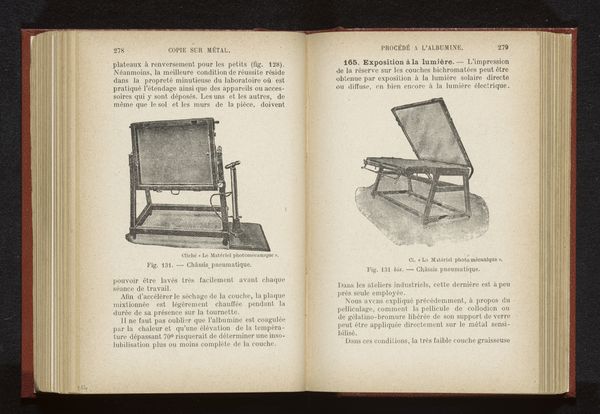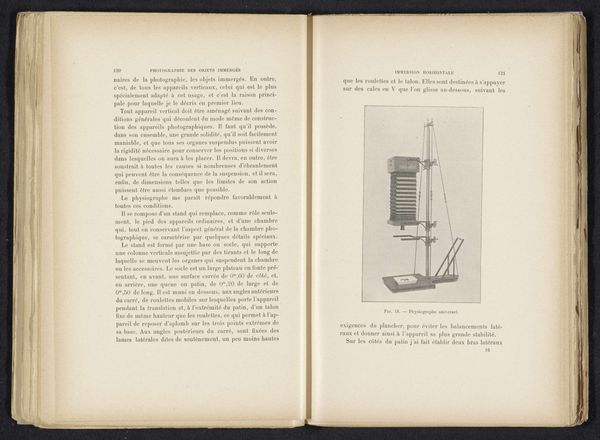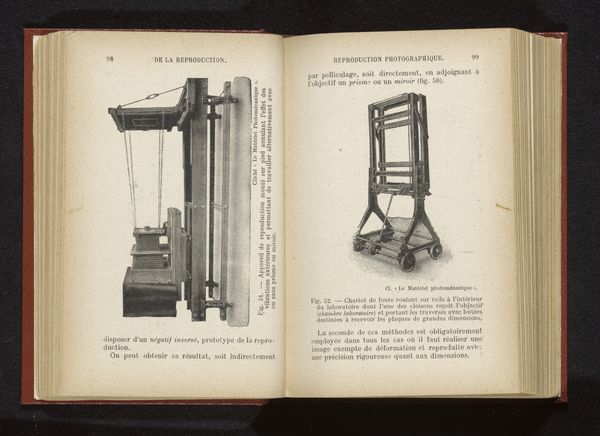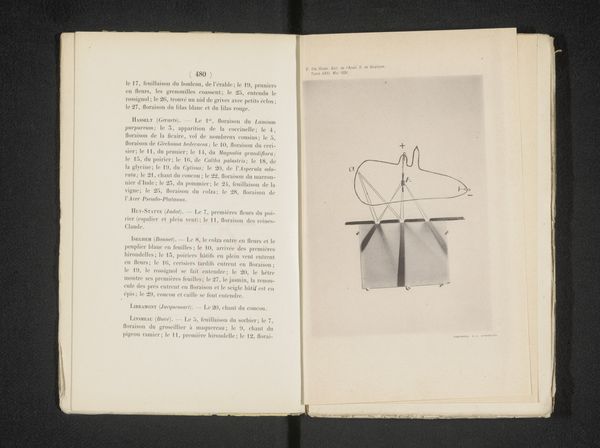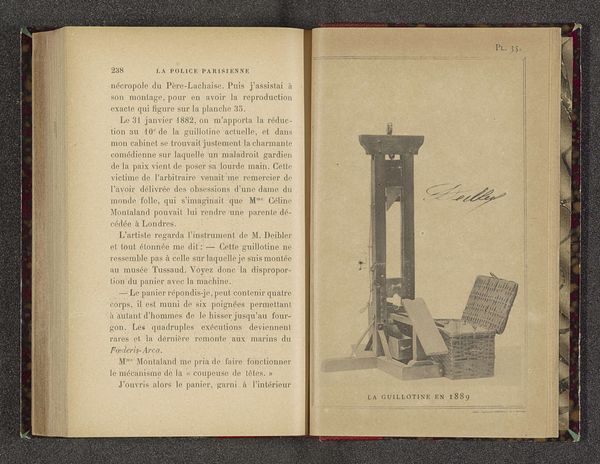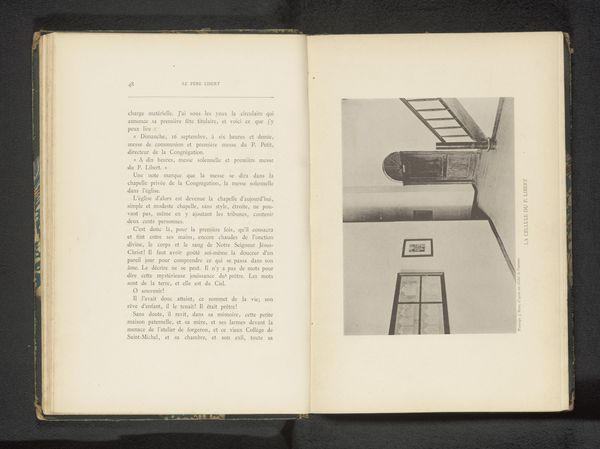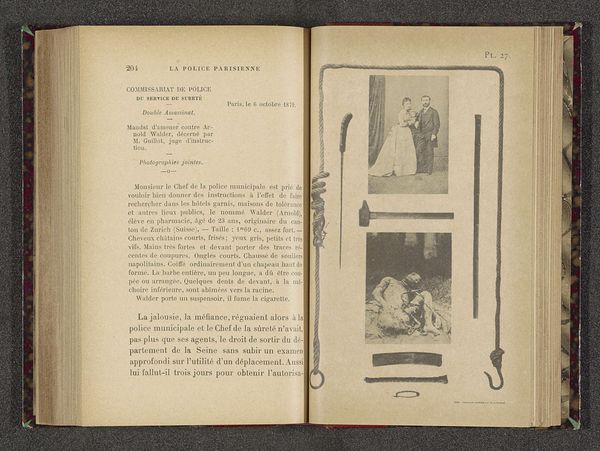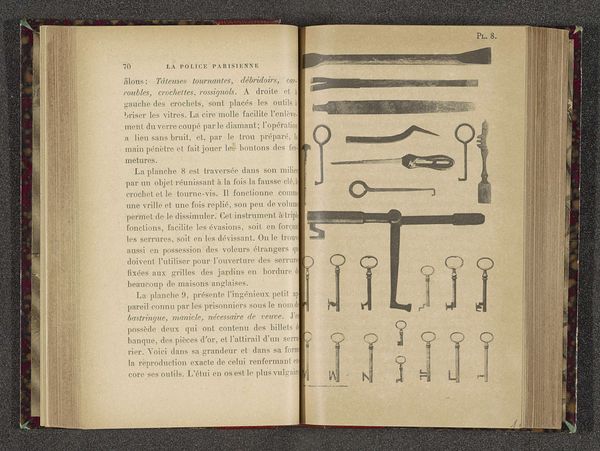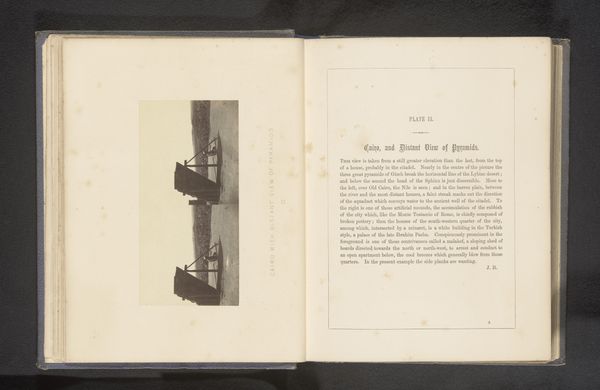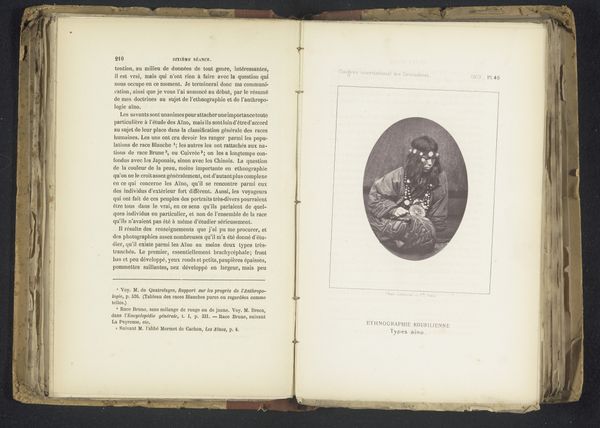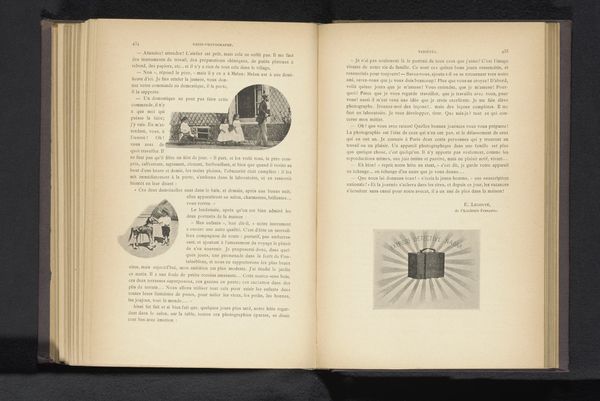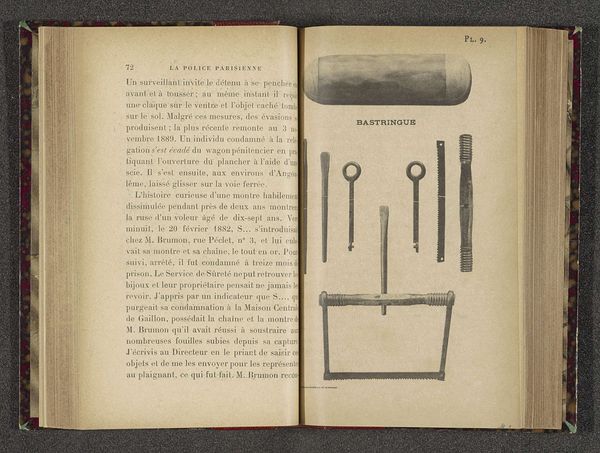
Stellage waarin vermoedelijk iets gemonteerd kan worden dat fotomechanisch gereproduceerd wordt before 1932
0:00
0:00
graphic-art, lithograph, print, textile, photography
#
graphic-art
#
lithograph
# print
#
textile
#
photography
Dimensions: height 84 mm, width 56 mm
Copyright: Rijks Museum: Open Domain
Curator: Here we have a lithograph called "Stellage waarin vermoedelijk iets gemonteerd kan worden dat fotomechanisch gereproduceerd wordt," dating from before 1932. The literal translation being "framework in which presumably something can be mounted which is photo-mechanically reproduced." Editor: My immediate impression is one of austere practicality. It presents this stand, probably an example of then-modern textile manufacture with cold, industrial objectivity. The strong lines and geometric arrangement are fascinating in their starkness. Curator: Absolutely. And within the context of early 20th-century industrial advancements, this seemingly simple framework embodies a critical shift towards mechanized visual reproduction, marking an evolution in mass production. It points to photography’s increased role in manufacturing processes. Editor: I see your point about the photograph, but I still feel this particular image emphasizes an almost architectural rigidity. Look at the right angles, the clean lines... the balance of rectangular forms with those small, crucial circles as part of the castors or base. These things highlight functional design in its purest form, it goes without excess! Curator: And yet, beyond its design, there’s a societal shift embedded within this piece, it mirrors photography's rise as an instrument of not only documentation but of disseminating commercial visuals. It raises issues around the accessibility and distribution of knowledge, power, and representation, influencing contemporary understanding and impacting the cultural status quo. Editor: Your reading gives additional dimensions. It's also interesting how it presents both graphic-art, textile production and photography. But if we only consider the form again: The varying lines, the texture created solely with light and shadow; it's quite beautiful as a standalone arrangement, which speaks volumes about effective graphic communication too, even today. Curator: I agree. Bringing in broader narratives and ideas is essential. Understanding this framework is as a symbolic bridge from handcraft production to mechanised, and industrialized visual reproduction allows us to recognize it. The text beside the artwork emphasizes just how automated this system had become. Editor: Seeing your contextual reading of societal context next to the art’s stark beauty... gives new perspective. It is both function and symbol. Curator: Exactly, allowing us a more critical and complete vision.
Comments
No comments
Be the first to comment and join the conversation on the ultimate creative platform.
